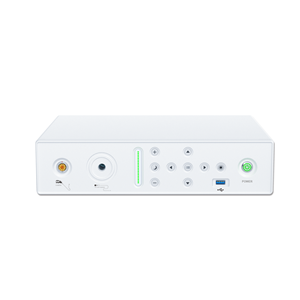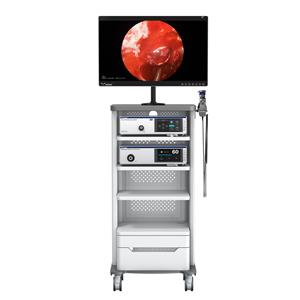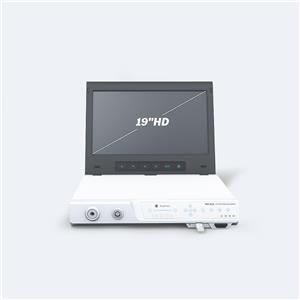Maintenance of electronic gastrointestinal endoscopy and troubleshooting methods for common faults
Electronic gastrointestinal endoscopy is a sophisticated and expensive optical and electronic instrument. Correct use and maintenance can prolong the service life of the endoscope and maximize the efficiency of the instrument. The maintenance experience of the endoscope and the troubleshooting methods of common faults are introduced as follows.
1. Maintenance of gastrointestinal endoscopy
Gastrointestinal endoscope is a kind of precise and valuable optical and electronic instrument. During use, it must strictly abide by the operating procedures, and earnestly implement its maintenance system, and specifically perform strict, inspection, careful, clean, flush, and storage.
Strict: Strict management system. Establish the operating procedures of the instrument, establish the registration file for the use and maintenance of the instrument, and implement special personnel to be responsible; it is forbidden to use the instrument by those who are not familiar with the performance of the instrument.
Check: Before surgery, each part of the circuit and each part of the instrument must be carefully inspected to check whether the circuit and wires are in good contact, whether the voltage meets the requirements, whether the performance of each part of the instrument is normal, and whether there is leakage in the endoscope. Use the instrument in strict accordance with the operating procedures; after use, turn off the power switches in turn, and cover the instrument with a dust cover after Z.
Fine: that is, meticulous. When installing, operating, and washing the endoscope, you must hold, put, take, and operate gently; when washing the endoscope, be sure to avoid collision and excessive distortion of the endoscope to avoid damage to the endoscope.
Net: Clean. Endoscopes and their accessories should be cleaned and disinfected in strict accordance with the 2004 version of the Ministry of Health Cleaning and Disinfection Regulations.
Flush: That is, flush. The endoscope and accessories are on a "clean" basis. In order to prevent air and water from being blocked, flush the air and water pipes as much as possible. For patients with gastric retention, poor intestinal cleansing, gastrointestinal bleeding, tissue biopsy, and those who have a long time for endoscopy, be sure to rinse thoroughly. For general patients, flush as much as possible.
Save: Save it. After the endoscope is used, it should be stored in a standardized manner. After the day of use, the endoscopes must be thoroughly cleaned, disinfected, dried, and maintained (leak detection, wiped with absolute alcohol on the tip, wiped with absolute alcohol on the lens body, oiled on the buttons, etc.) and stored in a dedicated endoscope cabinet (hanging , Safe), and turn on UV disinfection regularly.
2. Troubleshooting methods for common endoscope failures
(1) Reasons for air blockage or poor air delivery:
①The tip part accidentally collides with a hard object, causing the nozzle to deform and block the nozzle (improper endoscope maintenance is the main cause of blockage);
②If the endoscope is not cleaned immediately after using the endoscope, the dirt is solidified in the nozzle and the nozzle is blocked;
③The endoscope was not thoroughly cleaned with detergent before disinfection, causing the disinfectant to coagulate mucus and protein and block the nozzle;
④ When wiping the mirror, the direction is wrong, the cotton yarn is stuffed into the nozzle, and the nozzle is blocked;
⑤After the nozzle is blocked, use a needle to pick or remove the nozzle by yourself, which will damage the nozzle or cause the internal tube to be more likely to be clogged;
⑥Others, such as poor gas production from the air pump, poor connection between the endoscope connection part and the host, and poor connection of the water storage bottle.
Anti-blocking measures:
① When operating the endoscope, it should be light and steady to prevent the tip from colliding and damaging the nozzle;
②When the endoscope is in use, it is necessary to infuse the air at the right time and inject more water as appropriate to prevent the liquid in the cavity from entering the air and water supply pipeline retrogradely; ③The endoscope should be cleaned immediately after use, and cleaned, disinfected and dried in strict accordance with the specifications;
④When wiping the mirror surface, follow the direction of the nozzle; ⑤After the nozzle is clogged, the endoscope can be soaked in warm water enzymatic washing solution, and then the whole pipeline is pressurized lavage. Do not pick or remove the nozzle by yourself. To avoid leakage of the endoscope; ⑥ Connect all parts of the endoscope correctly.
2. Reasons for poor water delivery:
① The O-ring in the water bottle interface is damaged → water is poured into the air supply pipe → the water supply, the air supply is not smooth, and the water/air button leaks;
②The O-ring in the water bottle cap is damaged/lost/deformed/badly installed → gas leaks from the water bottle → water cannot be delivered;
③Improper cleaning and maintenance cause the internal pipeline to be blocked or the nozzle to be blocked → water and air supply are not smooth;
④The endoscope is not cleaned immediately after the endoscope is used → the dirt is solidified in the water and air pipe → the water and air are not fed smoothly;
⑤The endoscope is not thoroughly washed before disinfection → the protein is coagulated by the disinfectant → the water supply/trachea and the nozzle are blocked.
Precaution:
①When operating the endoscope, be light and steady to prevent the tip from colliding and damaging the nozzle.
②In the use of the endoscope, it is necessary to infuse the air at the right time, and inject more water appropriately to prevent the liquid in the cavity from entering the air and water pipes retrogradely; the endoscope should be cleaned immediately after use, and cleaned and disinfected and dried in strict accordance with the specifications;
③ Follow the direction of the nozzle when wiping the mirror surface;
④ After the nozzle is clogged, the endoscope can be soaked in warm water enzyme washing solution, and then the whole pipeline is pressurized lavage. Do not easily pick up with a needle or remove the nozzle by yourself to avoid endoscope leakage.
⑤Connect all parts of the endoscope correctly, and check the tightness of the water storage bottle carefully.
3. Reasons for poor suction: failure of the suction device; the suction pipe is blocked, the suction button and the button base are worn and the suction is bad. Remedy: After confirming that the suction device is normal, use a 50ml syringe to inject water or air into the suction pipe; when scrubbing, the cleaning brush should be kept straight to avoid friction with the button mounting seat.
4. The reason for the virtual or complete loosening of the angle knob: The endoscope angle adjustment knob is partially loosened or completely slipped after being used for a long time, or the angle button traction wire is broken. Preventive measures: The angle adjustment knob of the endoscope should be used gently, not in a saw-saw style, and should not be overused in order to prolong the service life. Once it appears, ask professionals for debugging as soon as possible.
5. Difficulty in inserting accessories: For example, the reason for the difficulty in inserting biopsy forceps:
①The bending angle of the endoscope is too large, which causes the flexibility of the treatment accessory to be restricted by the hard part of its tip, which makes it difficult to insert the accessory;
②The endoscope is broken, causing deformation of the pliers tube, making it difficult to insert accessories;
③Improper cleaning and disinfection procedures cause dirt to solidify and crystallize in the pipeline, which makes it difficult to insert accessories;
④ Using damaged accessories, the accessories are knotted in the pipe, making it difficult to insert the accessories. Elimination measures: the endoscope must be cleaned and disinfected correctly; the accessories should be carefully checked before use; be careful when inserting the accessories; as far as possible, insert and pull out the endoscope accessories without excessive bending to avoid damage to the endoscope. leakage.
6. Endoscope water leakage Endoscope leakage is a serious fault of Z. If it is not discovered in time, it can cause damage to the micro-camera system of the photoelectric coupling element (CCD/CMOS), and the endoscope will inevitably have to pay a high price.
Leakage position: Z common parts are the rubber of the flexible part of the endoscope, the end of the inner lens, the body of the endoscope, the operation part, and the connecting part of the endoscope.
Reasons: ①The endoscope has been used for a long time or is poorly maintained → the bent rubber is aging → the bent rubber is easy to break → the endoscope leaks; ② the biopsy forceps or other accessories are not smooth through the biopsy path of the endoscope, and they are forced through, resulting in damage to the biopsy tube; ③ The endoscope is cleaned with sharp tools or there are sharp edges and corners in the cleaning tank → the curved rubber is scratched → the endoscope leaks; ④ knock or bump the tip → the inner lens end leaks. ⑤The lens body was accidentally bitten by the patient.
Elimination measures: Be careful when operating the endoscope; correct biopsy; the cleaning and disinfection procedures of the endoscope must be correct; advocate high-quality maintenance; the endoscope must pass the water leakage test before cleaning.
7. Others, such as blurred images of mirrors, may be caused by dirt on the end lens of the inner lens. Generally, the image can be clear after wiping with absolute alcohol; the rainbow phenomenon of the endoscopic image is mostly endoscopic CCD/CMOS If it fails, it should be stopped immediately, and professional personnel should be required to repair it.




